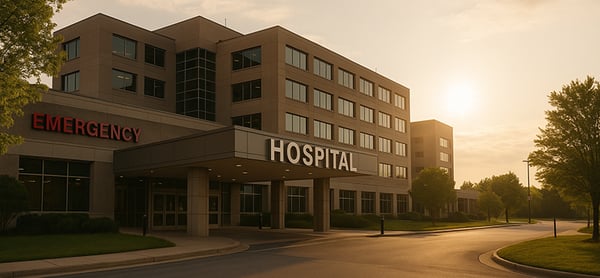For hospital leaders, HCAHPS scores and workplace violence statistics often seem like disconnected metrics managed by different departments with different priorities. Yet a closer examination reveals that these seemingly disparate measures share a common foundation: The quality of communication between healthcare providers, patients, and families.
Posts about Articles (5)
From Conflict to Clinical Quality: A Framework for Hospital Leaders
Hospital leaders have traditionally viewed workplace conflict management and clinical quality improvement as separate domains with different methodologies, metrics, and ownership. However, forward-thinking healthcare organizations are recognizing that conflict management directly impacts clinical outcomes, creating opportunities to integrate these previously siloed approaches into a unified...
How Leading Hospitals Measure the Success of Their De-Escalation Programs
As healthcare organizations increasingly invest in de-escalation training, a critical question emerges: How do we know if these programs are actually working? Leading hospitals are moving beyond simplistic metrics like "number of staff trained" to implement sophisticated measurement frameworks that demonstrate real impact on safety, quality, and organizational performance.
Using Data to Drive Culture Change: Conflict Metrics that Matter
Creating lasting culture change around workplace violence prevention requires more than good intentions—it demands strategic use of data to drive awareness, inform interventions, and measure progress. While many organizations track basic safety metrics, truly transformative culture change emerges from a more sophisticated approach to conflict-related data.
What Your Incident Reports Aren't Telling You About Workplace Conflict
In healthcare and other high-risk environments, incident reports serve as essential tools for tracking workplace violence and safety concerns. However, these reports often capture only the tip of the conflict iceberg, leaving organizations with incomplete data and missed opportunities for prevention.
Are You Meeting OSHA & Joint Commission Workplace Violence Standards?
With regulatory scrutiny of workplace violence prevention intensifying, healthcare organizations face increasing pressure to demonstrate compliance with OSHA and Joint Commission standards. The question is no longer whether your organization will be evaluated on workplace violence prevention, but when, and whether you'll be prepared when that evaluation occurs.
Proactive Conflict Management Protects Your Bottom Line
Healthcare executives increasingly recognize that safety isn't just about patient outcomes—it's also a critical financial imperative. While patient safety has rightfully received significant attention and investment, workplace safety for healthcare staff often remains under-addressed despite its substantial impact on an organization's financial health.
From Policy to Practice: Embedding Respect into Hospital Culture
Healthcare organizations universally include respect and dignity in their core values. Walk through any hospital lobby, and you'll likely see these words prominently displayed on mission statements and value posters. Yet for many institutions, there remains a significant gap between these aspirational statements and the lived experience of staff and patients.
The challenge isn't in writing...
Safety is a Leadership Metric: Are You Measuring What Matters?
Healthcare leaders track countless metrics – patient satisfaction scores, length of stay, readmission rates, and financial indicators. Yet one of the most critical metrics often remains unmeasured: safety-related behaviors and perceptions among staff and patients.
When we discuss safety in healthcare, conversations typically center around clinical outcomes and patient harm events. While these...
Respect is PPE for the Mind
In healthcare environments, personal protective equipment (PPE) is non-negotiable. No responsible clinician would examine a patient with a highly contagious disease without donning the appropriate gloves, gown, mask, or even powered air-purifying respirators when necessary. These physical barriers protect healthcare workers from biological threats that could cause serious harm.
But what about...












